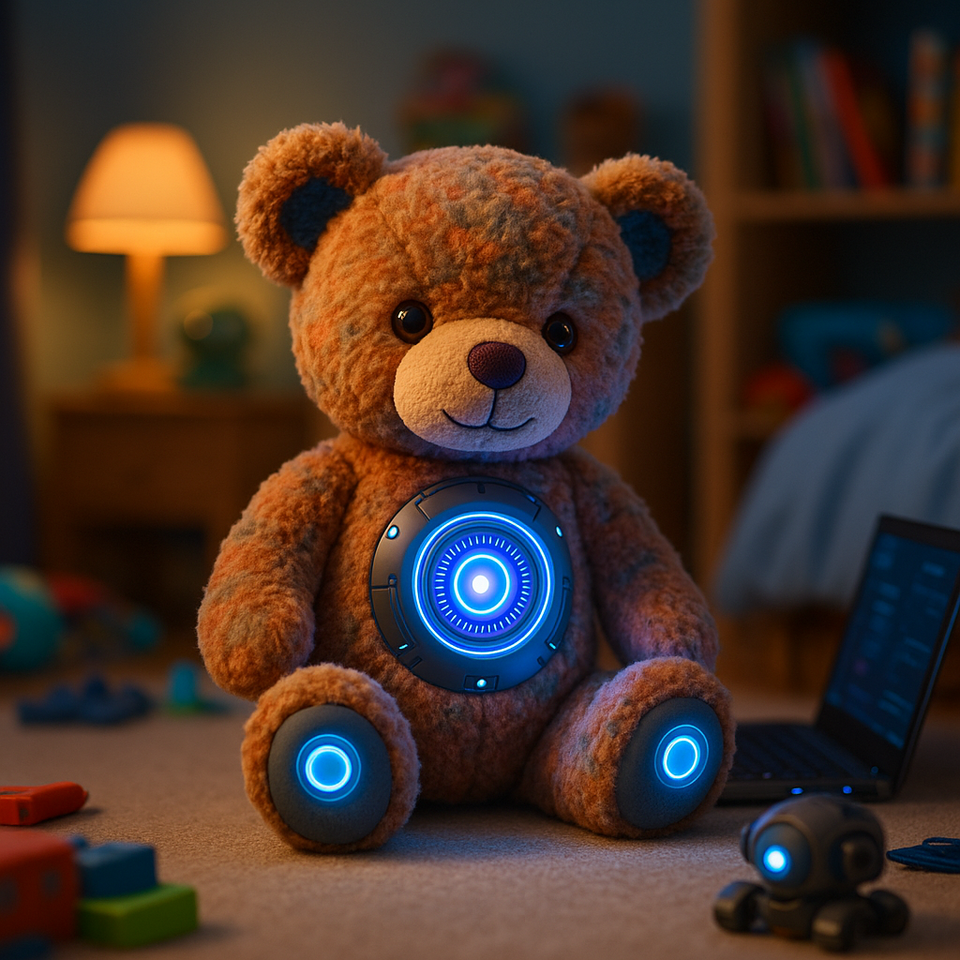The Rise Of AI-Powered Stuffed Animals: Is Your Child’s Teddy Bear Getting Smarter Than You?

🤖 The Rise of AI-Powered Stuffed Animals: Is Your Child’s Teddy Bear Getting Smarter Than You?
🚀 A New Era in Playtime
Remember when stuffed animals only needed two things: fluff and an adorable face? Enter the 21st century—where simple teddy bears are apparently passé and today’s kids prefer their plush friends to chat, tell stories, and maybe even help with math homework. The explosion of AI-powered stuffed animals isn’t just a fad; it’s a full-blown toy revolution. Brands are racing to launch interactive companions equipped with everything from voice assistants to emotional responses, leaving regular stuffed toys staring blankly from the clearance bin.
These high-tech playmates are outfitted with microphones, speakers, and sometimes even Wi-Fi—because apparently, even your child’s bedtime buddy needs to be connected to the cloud now. They sing, converse, and offer personalized experiences, making classic toys seem about as cutting-edge as a pet rock. It’s clear: old-school plushies aren’t just competing with each other but are now being outmaneuvered by their own artificially intelligent cousins in a rapidly evolving playroom landscape.
The shift reflects today’s tech-loving families, with parents looking for toys that entertain, educate, and—ideally—occupy their kids for more than five minutes. As AI-powered companions flood the market and transform playtime, it looks like the days of silent, floppy-eared plush may be numbered—unless, of course, they learn to code.
🧩 Discovering the Technology Behind Smart Stuffed Animals
So, what makes these plush pals “smart”? No, it’s not extra stuffing with Einstein quotes. Smart stuffed animals come loaded with microchips, language processors, sensors, and even cloud connectivity. Some can process a child’s vocal commands, tell interactive stories, or play music on demand. Others go a step further by integrating with apps or connecting to home Wi-Fi to update their “skills”—because nothing says childhood magic like a firmware update.
At the core of these toys are AI algorithms designed to recognize speech, understand basic sentences, and respond with pre-programmed answers or actions. Some models track your child’s preferences and adapt their responses over time, nearly as if your kid’s new best friend is taking notes for a book deal. They’re designed to learn and personalize play, offering activities and dialogue tailored to the child’s age and interests. It’s one part educational, two parts astonishing, and maybe three parts “how do they come up with this stuff?”
✨ Exploring the Advantages of High-Tech Toys for Kids
The marketing promises are as fluffy as the plush: smarter kids, happier parents, and hours of educational fun. These AI-enhanced toys claim to foster language development, encourage imaginative play, and even help with social skills as children role-play conversational scenarios. For working parents, it can feel like having a digital nanny on standby.
Interactive storytelling, math games, and emotional feedback help children learn in ways that classic toys just can’t match (unless your childhood bear moonlighted as a tutor). Some plushies are equipped with comfort features, such as recognizing when a child is sad and offering soothing words. In theory, these toys blend education, tech-savviness, and companionship in a single, soft shell—helping young minds adapt to a world where AI is already part of everyday life. But let’s be real: sometimes the biggest advantage is simply getting five minutes of peace while the toy keeps your child entertained.
⚠️ Understanding Privacy Risks: What Parents Should Know
As much as smart toys can enrich a child’s experience, they also come bearing caution labels in the form of privacy risks. These plush spies (we mean, “friends”) often collect data—recording voices, storing conversations, or sending information via Wi-Fi. So when your child confides their secret cookie stash location, it might not stay between them and Mr. Fluffy.
Hacking fears aren’t just paranoia: there have been genuine incidents of smart toys being compromised, allowing strangers to tap into audio streams or access personal information. On top of that, companies often use collected data for marketing or development purposes. While many brands tout encrypted data and strict security, the reality is that anything connected to the Internet can be vulnerable. Parents need to be vigilant: read the privacy policies, set up proper security measures, and maybe, just maybe, teach kids not to share state secrets with their cuddly confidante.
💡 Are AI Stuffed Animals Worth the Investment? A Parental Guide
Should you embrace the AI teddy revolution or lovingly cling to the nostalgia of mute, low-tech plush? On one hand, smart stuffed animals offer genuine perks—personalized learning, interactive play, and a taste of tomorrow’s technology. On the other hand, they’re pricey, sometimes buggy, and come with a side of privacy concerns.
For some parents, the thought of their child bonding with a machine raises eyebrows (and maybe some existential dread). For others, it’s a logical step in a tech-driven world. Our advice: weigh your child’s needs, your comfort with technology, and how much you trust your Wi-Fi password. Until then, just remember—no matter how “smart” a toy is, there’s still no substitute for a real hug (or an off switch).


